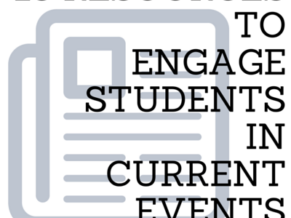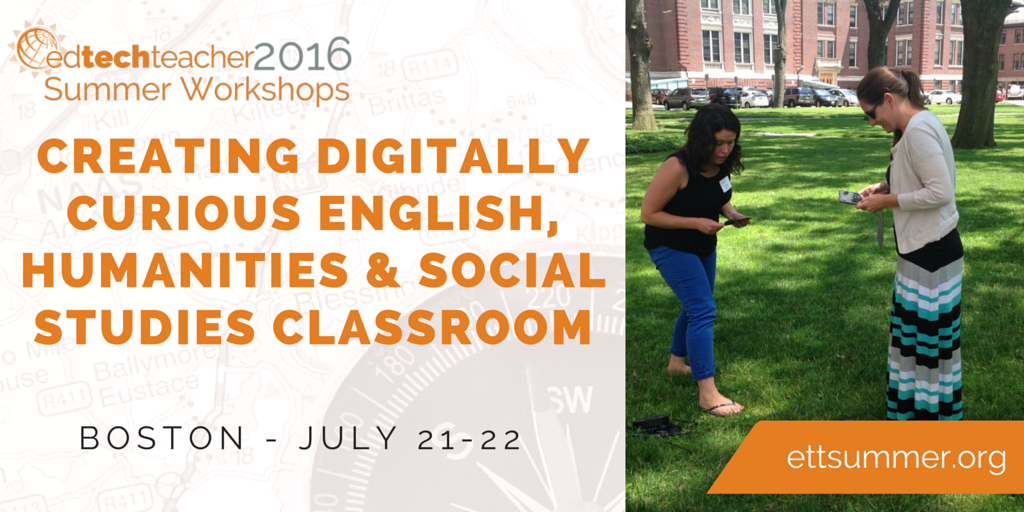This post first appeared on Daily Genius.
Engaging in current events is an important part of academic scholarship and growth. In the 21st century, students are often hit with a barrage of unvetted information. As educators, it is important to guide students in how to assess and evaluate online content (one of my favorite tools for this is the CRAAP test, created by California State University at Chico). Another way to help students stay abreast of current events is to guide them towards authentic news agencies and resources, especially those that engage in social media. At the beginning of the school year, I ask my students follow a series of news sources on the Social Media channels that they use (Facebook, Twitter, Instagram, Snapchat, etc). By keeping these resources in their news feeds, not only do they get breaking news as they check their accounts, but they can use that information to counterbalance the hyperbole and misinformation that may be found in conjunction with a news story. Here are a few resources that I suggest they follow:
Public Radio & Television
NPR continues to be a well respected source of news and information that features a lot of worthwhile content on Facebook and Twitter. It also supplements on Instagram and Snapchat (you can look up their feed within the app). In addition to the national channels, students can also follow their local NPR stations for news and stories that impact their community. I also encourage students to check out NPR’s new app, NPR One, which allows them up to date stories of interest from around the globe.
National and Local Newspapers
Many newspapers are now behind a paywall (although your local or school library may have digital access for students and teachers). Still, you can access headlines and, in most cases, a limited number of stories per month. Encourage your students to follow the national news, such as: the New York Times, the Washington Post, and USA Today on Facebook and Twitter (as well as other media they employ) in addition to local and state newspapers. Many papers now offer apps for iOS and Android; while an account may be necessary to access all of the content, they still allow students to read headlines and news snippets.
Public Network News
Network news remains a staple in American society and the “big three;” NBC News, ABC News, and CBS News; are the largest producers of national and local news. Stories that are shared on the public airways are readily available on their websites and includes not only printed material, but video and other relevant media. In addition to the national news cycle, they have local affiliates that cover regional and local stories. Ask students to follow their Twitter and Facebook accounts to keep up with breaking news. Comparing how different news sites cover breaking news is an excellent way to begin a discussion on journalism.
Cable News
Cable news has become emblematic of our 24 hour news cycle as well as a topic of public debate. While watching the news itself requires a cable subscription, they have open websites and even news clips posted online. Students can keep track of CNN news stories on their website, Twitter account, or Facebook. For more politically driven news, more mature students can explore news avenues such as FoxNews or MSNBC; they can discuss how stories are examined (or not) on different networks. Again, comparative analysis of news can facilitate discussions about the ethics of news as entertainment or political discourse.
International and Foreign Language
The internet has brought news from around the world into our living rooms. Students can explore English language news covered from a different perspective. For example, students might explore American politics on BBC or Aljazeera. Reading English language news from other countries helps students to broaden their perspective. By subscribing to these avenues on their Facebook and Twitter pages, students can keep abreast of breaking news around the world.
Students studying other languages can explore news networks abroad. For example, French students can read Le Monde’s website or follow them on Twitter. Spanish students can access Univision and follow Spanish language news in the Americas via their Spanish language Twitter and Facebook accounts.. German students can access Spiegel online or follow their German language Twitter account and Facebook page.
Accessing the news has shifted in light of new technologies. Bringing current events into the Social Media environment that students already explore allows them to have ready access to the news cycle and more meaningfully engage with what is happening around the world.


